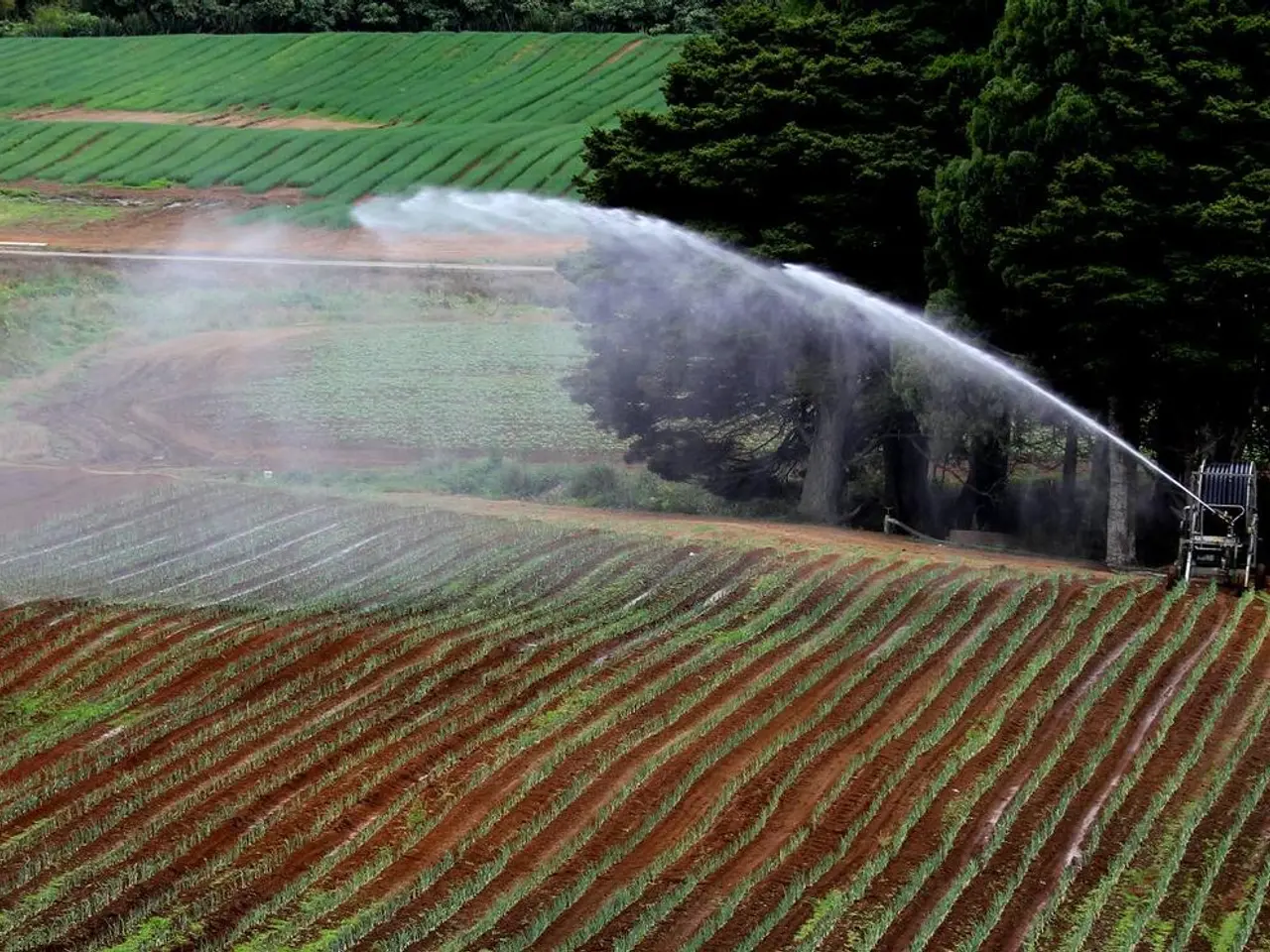Meaning of 10-10-10 in Fertilizer Explanation
In the world of gardening, two popular balanced fertilizers stand out: the 10-10-10 and the 16-16-16. These fertilizers, with equal percentages of nitrogen (N), phosphorus (P), and potassium (K), offer different strengths to cater to various gardening needs.
10-10-10: A Balanced, Moderate Choice
The 10-10-10 fertilizer is an all-purpose, synthetic fertilizer with a balanced nutrient composition. It is often used where moderate nutrient application is desired or where soil fertility is already decent, minimizing the risk of over-fertilization. This fertilizer is less concentrated, allowing easier control and reducing the risk of nutrient burn. It is good for regular maintenance feeding and for soils with moderate fertility.
When fertilizing young plants, it's advisable to use a water-soluble liquid fertilizer and avoid spraying it directly on foliage. Before application, water the soil thoroughly for better nutrient absorption. For younger emerging plants, a 10-10-10 fertilizer should be used in diluted form. Apply the fertilizer in colder parts of the day to avoid direct sun exposure and soil drying.
However, 10-10-10 may require larger application amounts to meet high nutrient demands, potentially increasing labor and bulk handling. Moreover, it can cause a white crust to form on top of the soil. Also, high quantities of nitrogen in a 10-10-10 fertilizer can cause excess leaf production, compromising fruit production.
16-16-16: A Stronger, Concentrated Option
The 16-16-16 fertilizer, on the other hand, has higher nutrient density, suitable for heavier feeding needs. It delivers more nutrients per unit weight, useful when soil tests indicate greater fertilization is needed or for rapid growth phases. It can reduce application volume and labor.
However, being more concentrated, it increases the risk of fertilizer burn if over-applied and may cause nutrient imbalances if soil conditions are not properly considered. High levels of phosphorus in a 10-10-10 fertilizer can kill microbes and fungi present in the soil, causing chlorosis in plants.
When to Use Each
Use the 10-10-10 in situations where a balanced but moderate nutrient supply is desired: established gardens, soils with some fertility, or plants that do not require heavy feeding. It suits general-purpose applications and maintenance feeding.
Use the 16-16-16 when soil tests show low fertility or where plants are in active rapid growth stages needing strong root and shoot development, such as nursery plants, new plantings, or heavy feeding crops. It is also preferred when a concentrated fertilizer is desired for less bulk and more precise nutrient delivery.
In summary, 10-10-10 is typically for general maintenance or lighter feeding, safer for a broad range of users and soil conditions, while 16-16-16 is preferred for more intensive fertilization in nutrient-deficient soils or high-demand plants. Always consider soil test results and plant type before choosing fertilizer strength to avoid nutrient imbalances or fertilizer burn.
Remember, it's crucial to avoid spraying fertilizers directly on foliage and to water the soil before application. Also, avoid using fertilizers if there is rain forecasted to avoid runoff and harmful chemicals entering the water system. Lastly, be aware that nitrogen runoff from a ratio 10 fertilizer can be toxic to fish and invertebrates and cause algae blooms that are hazardous to water life and detrimental to the fishing industry.
[1] Gardening Know How. (2021). 10-10-10 Fertilizer: What it is and How to Use it. Retrieved from https://www.gardeningknowhow.com/garden/fertilizers/types-of-fertilizers/10-10-10-fertilizer-what-it-is-and-how-to-use-it.htm [2] University of Illinois Extension. (2021). Fertilizers for Lawns. Retrieved from https://web.extension.illinois.edu/cfivt/yardandgarden/fertilizers-for-lawns/ [3] Clemson Cooperative Extension. (2021). Fertilizing Your Lawn. Retrieved from https://www.clemson.edu/extension/hgic/plants/lawns/fertilizing_your_lawn/ [4] The Spruce. (2021). 16-16-16 Fertilizer: What It Is and How to Use It. Retrieved from https://www.thespruce.com/16-16-16-fertilizer-1392921
Incorporating these balanced fertilizers into a home-and-garden lifestyle can boost plant growth and overall garden productivity. The 10-10-10 fertilizer, with its moderate nutrient composition, suits established gardens or plants with moderate nutrient requirements, while the stronger, concentrated 16-16-16 option is more suited for high-demand plants, nursery seedlings, or new plantings.




